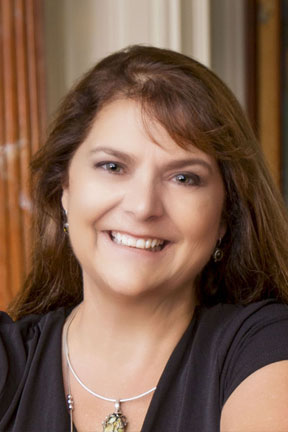Investigator Spotlight: Lisa Hall, PhD
Date Posted: Monday, June 17, 2024 Lisa Hall, PhD, associate professor of neurology, co-investigator in the Lawrence Lab, and a co-director and teacher in UMass Chan Medical School’s Principal 1 block, "Building Working Cells and Tissues." She received the 2024 Diversity, Representation and Inclusion for Value in Education (DRIVE) Commendation on May 30, 2024, from the dean and the Diversity and Inclusion Office, recognizing her work in creating an inclusive and appropriate educational environment for our learners. Dr. Hall teaches the Foundations of Medicine (FOM) Principles 1 course covering genetics, biochemistry, histology (cell biology), and physiology. She is a co-PI on many of Dr. Jeanne Lawrence’s grants, focuses her research on basic science and shares how the results always impact translational work.
Lisa Hall, PhD, associate professor of neurology, co-investigator in the Lawrence Lab, and a co-director and teacher in UMass Chan Medical School’s Principal 1 block, "Building Working Cells and Tissues." She received the 2024 Diversity, Representation and Inclusion for Value in Education (DRIVE) Commendation on May 30, 2024, from the dean and the Diversity and Inclusion Office, recognizing her work in creating an inclusive and appropriate educational environment for our learners. Dr. Hall teaches the Foundations of Medicine (FOM) Principles 1 course covering genetics, biochemistry, histology (cell biology), and physiology. She is a co-PI on many of Dr. Jeanne Lawrence’s grants, focuses her research on basic science and shares how the results always impact translational work.
Dr. Hall's research interests began by studying human X-chromosome inactivation, focusing specifically on non-coding RNA function, nuclear structure, and finding function in the repeat portion of our genome. Dr. Hall is a co-author of recent publications representing research initiatives in Lawrence Lab and was asked to support the development of a commentary discussing long lived RNAs, in the journal Science, and in a recent article on the ‘RNA revolution’ in Scientific American.
Dr. Hall, originally from the island of Hawaii (the Big Island) where most of her family still resides, pursued college on the mainland. She moved to Colorado Springs, Colorado to attend Colorado College for her undergraduate degree, then moved to California to attend the University of California, Davis, earning her PhD in genetics. She moved to Massachusetts and joined UMass Chan Medical School for her post-doctorate in 1999, in the Lawrence Lab, and has remained ever since. Dr. Hall has been co-directing the Human Medical Genetics course with Dr. Lawrence since 2003, teaching genetics to medical students. She was the assistant director of the Determinants of Population health course for six years and enjoys educating the community through talks about genetics and research at local high schools, science camps, and colleges.
Dr. Hall discovered her love for teaching by chance, as she believed she was a shy person. However, through teaching and speaking at seminars, she embraced the opportunity to help mold the next generation of medical doctors, which she considers a privilege. Dr. Hall has always been interested in the clinical side of genetics focusing on human genetics rather than bugs and microbes and shares, “I love the research area I am involved with because it is very broad, and since I am a jack-of-all-trades type of person, I get to indulge my curiosity in many different aspects of science. The Lawrence Lab has been a wonderful place to work and allowed me the perfect work/life balance flexibility to be a good mother, successful researcher, and dedicated teacher!”
When Dr. Hall is not in the lab, you may find her heading to Hawaii to visit family. She enjoys many hobbies related to art and has taught lapidary, the making of gemstones, at the Worcester Craft Center. You may find her there taking different art classes including jewelry making, stained glass, enamel, ceramics, felting, and so much more.